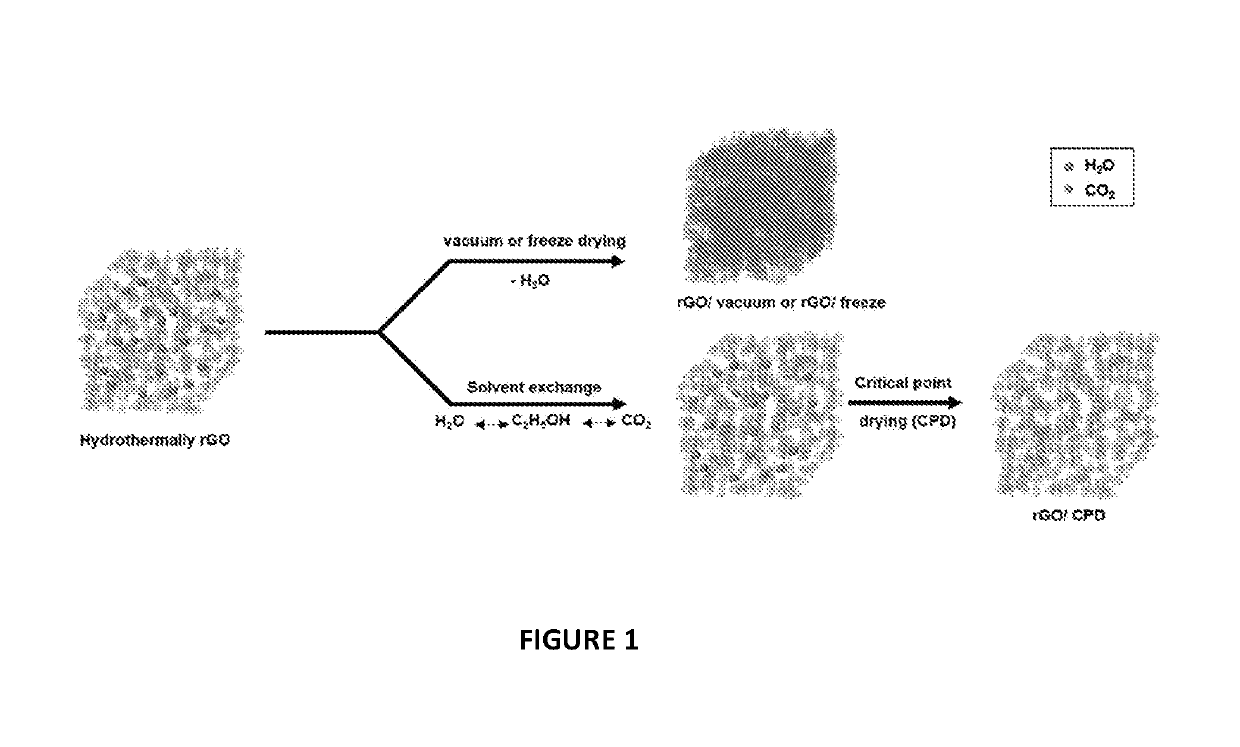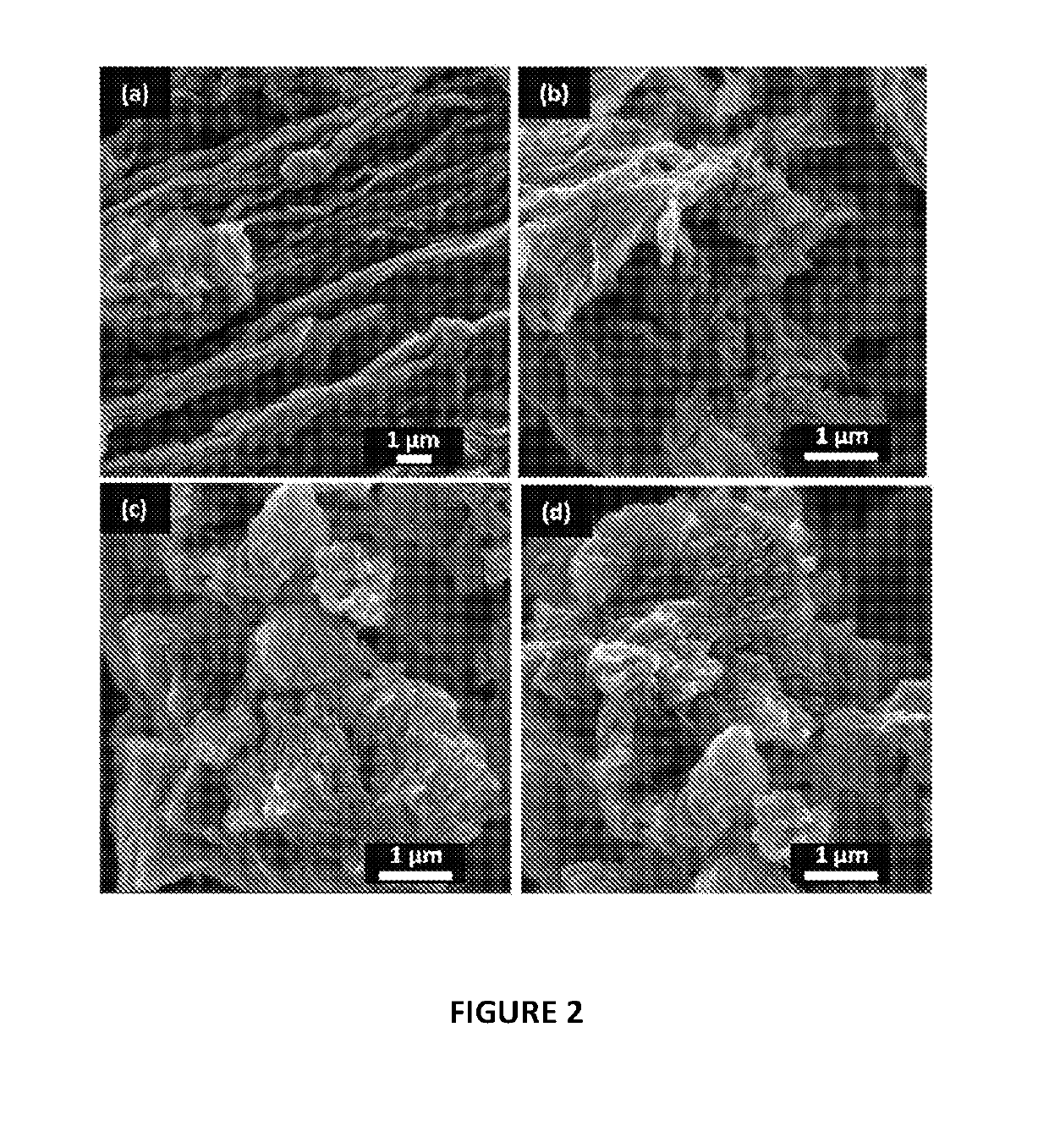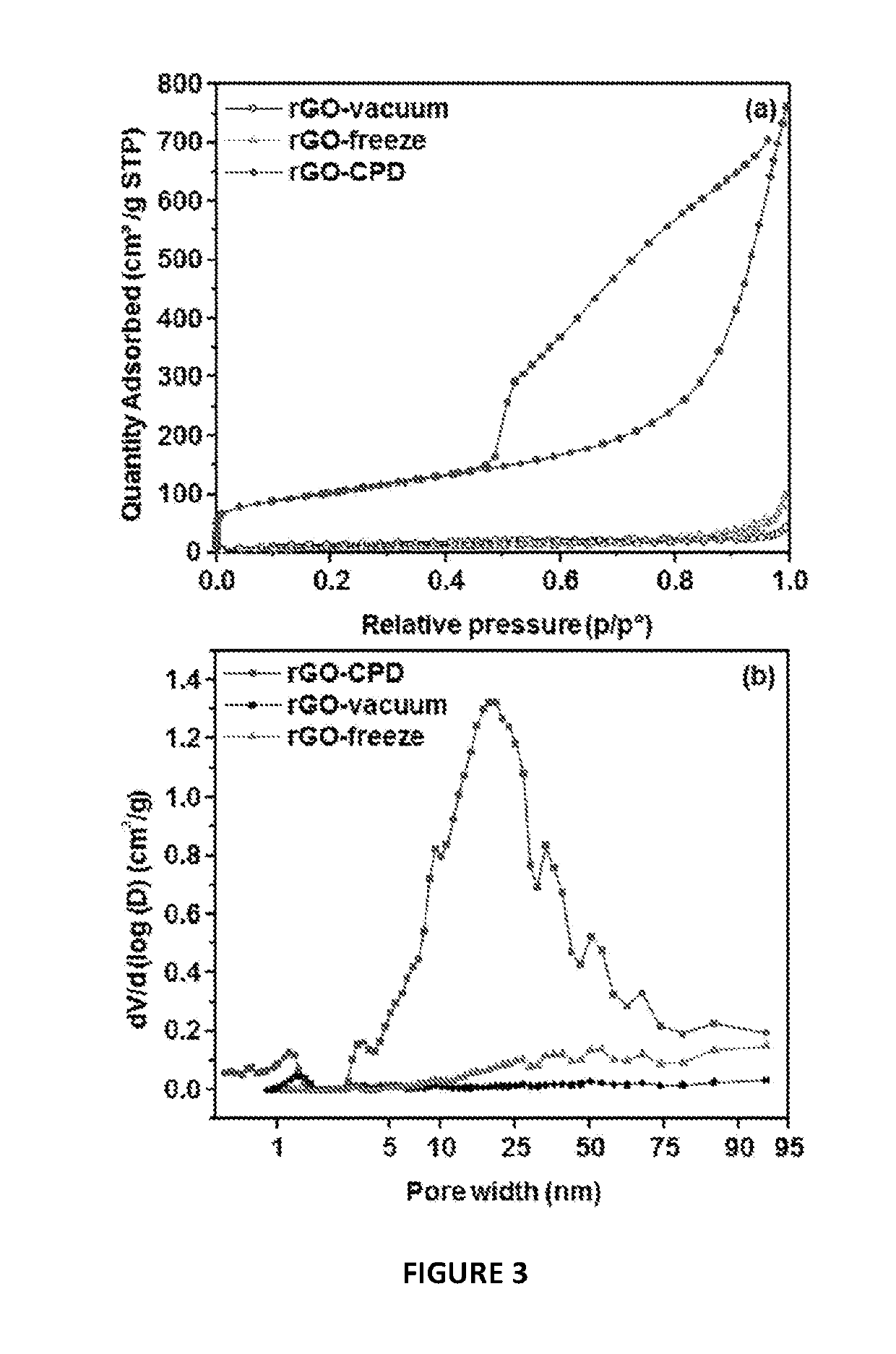Graphene materials and improved methods of making, drying, and applications
a graphene material and graphene technology, applied in the field of graphene materials and improved methods of making, drying, and applications, can solve the problems of not exploring the application of rgo to drying powdered carbon materials such as rgo, no real appreciation of how the drying step is done, and achieving high specific surface area and capacitance. , the effect of high capacitance and high specific surface area
- Summary
- Abstract
- Description
- Claims
- Application Information
AI Technical Summary
Benefits of technology
Problems solved by technology
Method used
Image
Examples
working examples
[0055]Additional embodiments are provided in the non-limiting working examples provided herein.
[0056]The preparation of the rGO materials was carried out using two steps. Firstly, the oxidation of graphite powder followed the procedure outlined in our previous work (adapted from the so-called improved Hummers' method)29, 30.
[0057]The conventional oxidation method of graphene oxide (GO) is the Hummers' method (KMnO4, NaNO3, H2SO4), which is the most common approach used to produce GO. In this work, the so-called improved-Hummers' method (KMnO4, 9:1 H2SO4 / H3PO4) was used. In this regard,
[0058]Tour et al. have demonstrated that preparing GO in 9:1 H2SO4 / H3PO4 while excluding NaNO3 clearly improves the efficiency of the oxidation process and subsequently the quality of the produced GO29. Overall, the amounts used and conditions employed were also in order with those commonly described in the literature (see, for example, cited references 1, 29, and 42-44 hereinbelow). In our previous wo...
PUM
 Login to View More
Login to View More Abstract
Description
Claims
Application Information
 Login to View More
Login to View More - R&D
- Intellectual Property
- Life Sciences
- Materials
- Tech Scout
- Unparalleled Data Quality
- Higher Quality Content
- 60% Fewer Hallucinations
Browse by: Latest US Patents, China's latest patents, Technical Efficacy Thesaurus, Application Domain, Technology Topic, Popular Technical Reports.
© 2025 PatSnap. All rights reserved.Legal|Privacy policy|Modern Slavery Act Transparency Statement|Sitemap|About US| Contact US: help@patsnap.com



